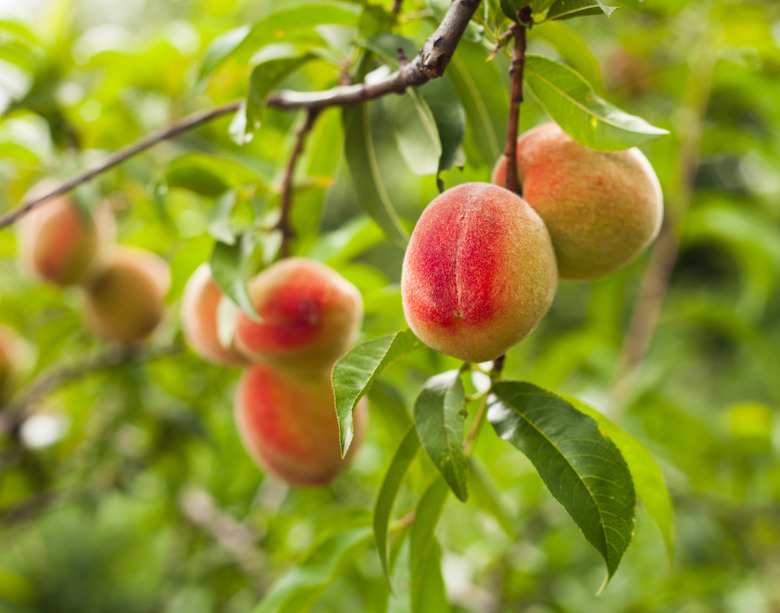What Is Shuck Split In Fruit Trees?
Shuck split is not a disease or disorder of fruit trees. It is a stage of fruit development that occurs in stone-fruit trees after the blossoms have been pollinated.
Shuck split is not a disease or disorder of fruit trees. It is a stage of fruit development that occurs in stone-fruit trees after the blossoms have been pollinated. Shuck split happens when a developing fruit bursts through the shuck, which consists of the sepals at the base of the blossom; the sepals hold the flower petals and protect the fruit ovary.
Fruit Growth
A shuck splits as a fertilized stone fruit grows too big to be contained in the shuck. As the fruit continues to develop, it pushes the shuck to the fruit's blossom end. Eventually, the shuck drops off the tree.
Development Trigger
Shuck split is the final stage of the blossoming process. Blossoming starts in early spring in stone-fruit trees as their sap rises from their roots to their limbs. The blossom buds start to swell until the internal pressure from rising sap pops open the buds, freeing the blossoms to grow. After the ovary in a blossom has been pollinated, development of the fruit begins.
- Shuck split is not a disease or disorder of fruit trees.
- Shuck split happens when a developing fruit bursts through the shuck, which consists of the sepals at the base of the blossom; the sepals hold the flower petals and protect the fruit ovary.
Time Span
Depending on the stone-fruit tree species, shuck split can occur anytime from four days to two weeks after pollination. It is a key stage in the development of stone fruits. At shuck split, the tiny fruits become visible and vulnerable to insect pests and diseases. Owners of stone-fruit trees should step up their insect- and disease-control measures at this time.
Nuts, Too
In some species of nut trees, the nuts develop within shucks. Unlike stone fruits, which shed their shucks early in their development, nuts stay shielded in their shucks until they are ripe. The shucks of fully ripe nuts turn brown and split, releasing the nuts from their tree. That event happens in early fall or before the first frost.
- Depending on the stone-fruit tree species, shuck split can occur anytime from four days to two weeks after pollination.
- Unlike stone fruits, which shed their shucks early in their development, nuts stay shielded in their shucks until they are ripe.
Shuck Split In Fruit Trees?
After blooms on some fruit trees are pollinated, the young, developing fruits have a papery shuck around their exterior. As the fruits grow, the shucks split and are shed. In seasonal weather, cherries may shed their shucks within three to four days, but it could take up to two weeks for peaches to shed their shucks if cold weather affects them, according to New York's Food and Life Sciences Bulletin. Stone fruit trees are among the kinds of fruit trees that split and shed their shucks. Stone fruit trees include cherry and peach trees.
References
- Oklahoma Cooperative Extension Service: Home Tree Fruit Production and Pest Management
- University of Georgia: Peach Growth Stages
- New Mexico State University Cooperative Extension Service: Growth and Development of Pecan Nuts
- New York's Food and Life Sciences Bulletin: Growth Stages in Fruit Trees — From Dormant to Fruit Set
- Oklahoma Cooperative Extension Service: Home Fruit Tree Production and Pest Management
